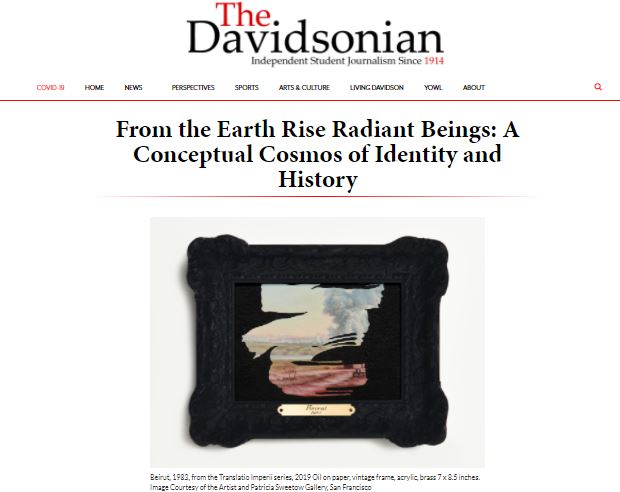Liên Trương’s artist talk on September 9th, 2021 about her exhibition Liên Trương: From the Earth Rise Radiant Beings was a whirlwind. I furiously took notes as she weaved together histories, art styles, and conceptions of war and life and loss. It was almost haunting to be surrounded by the years of collected stories of oppression, suffering, and resistance that are present in Trương’s works. There is a collective spirit within them. They transcend imperialist narratives and speak to transnational identities — especially ones of Asian and Asian-American experiences — that have been erased, suppressed, and redefined over and over again.
Trương traces cross-cultural genealogies in her exhibition, and said that much of her work “responds to modes of landscape and narrative, and for [her] practice [she’s] really interested in how each has been integral to the other in the creation of visual mythologies of the American Narrative — who is centered in those stories, the bodies that have been kept in the periphery.” She argued that the traditional idea of ‘landscape’ in Western contemporary art (with rules of linear and atmospheric perspective) is not an objective depiction of a scene. Instead, landscapes construct a colonized space. They force ideals of nationalism and territorial conquest onto nature; painting is claiming. Trương backed this up with numerous citations: of Romantic tradition, 18th and 19th-century British and American artists like Thomas Hearne and Thomas Moran, British Aesthetic theory, and Thomas Jefferson. (She cited so much that it seemed unbelievable that they all could somehow all be featured in a cohesive collection, but Trương’s exhibition achieves the impossible.)
Read the full article in The Davidsonian.
-Isabel Smith ’24

